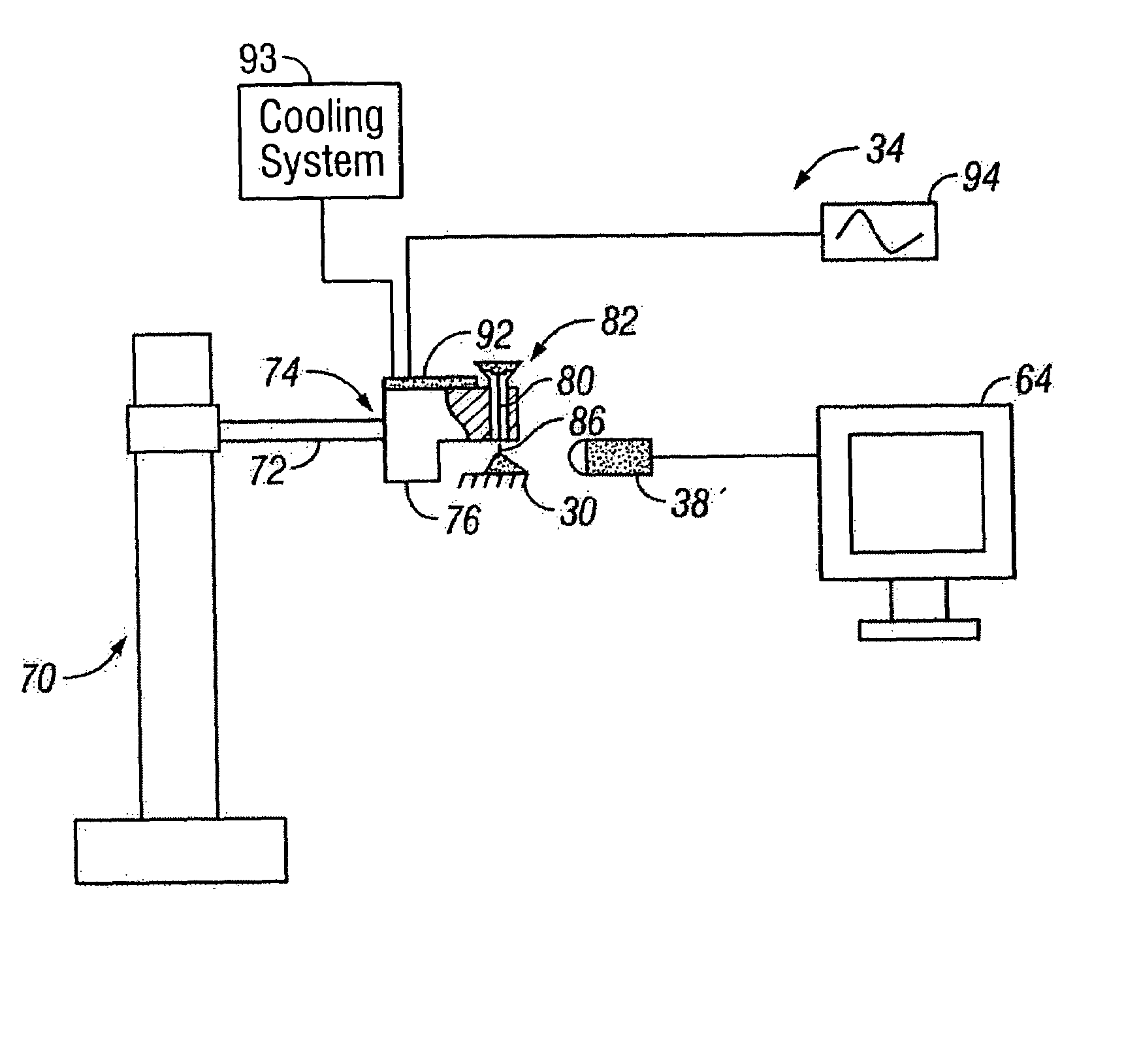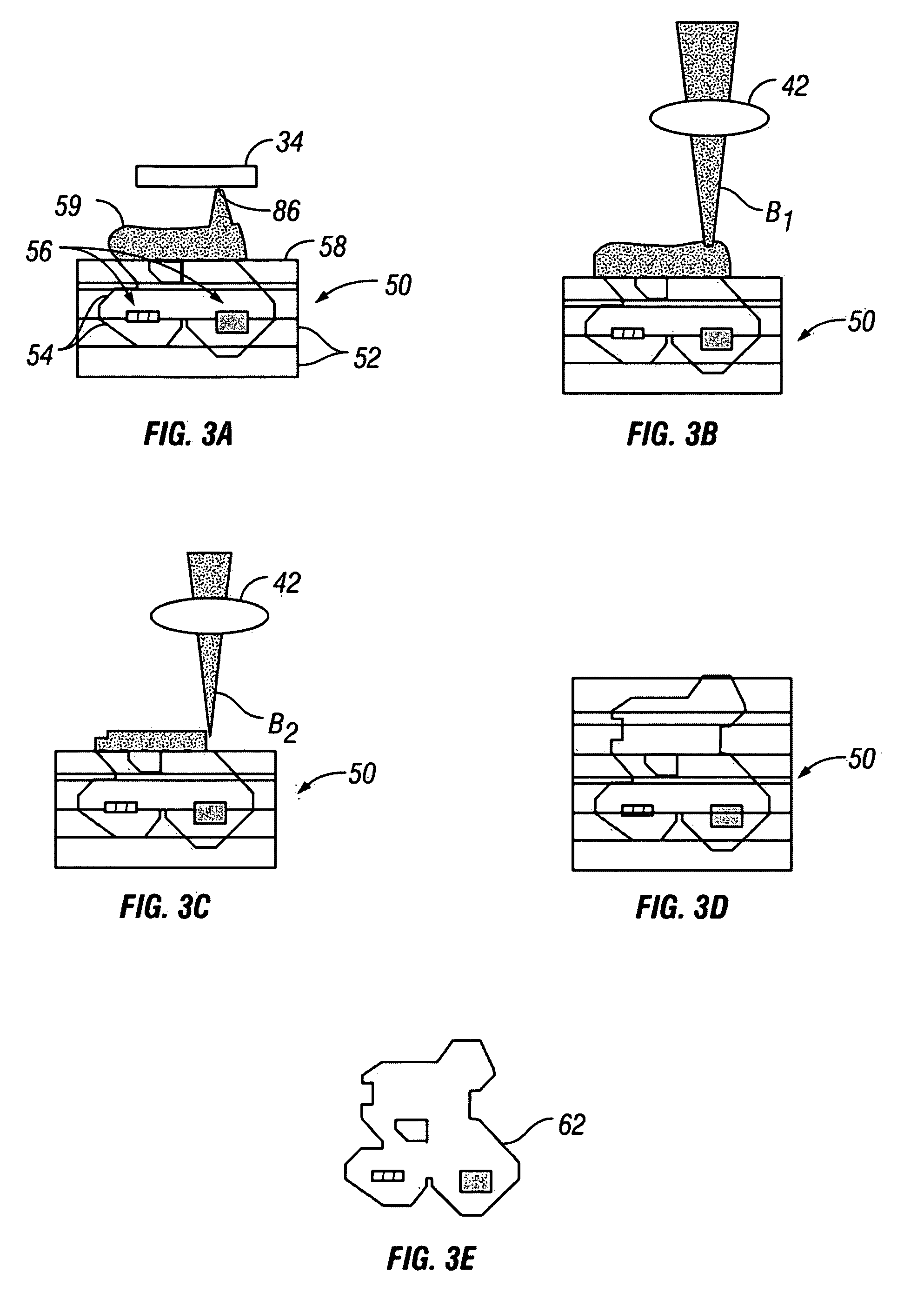Apparatus and method of dispensing small-scale powders
a technology of small-scale powder and apparatus, which is applied in the direction of heat inorganic powder coating, hair combs, roads, etc., can solve the problems of high material cost and process risk, complex process equipment, and the most expensive and unreliable part of the sensor and actuator, so as to facilitate the deposition
- Summary
- Abstract
- Description
- Claims
- Application Information
AI Technical Summary
Benefits of technology
Problems solved by technology
Method used
Image
Examples
Embodiment Construction
[0058]Turning initially to FIG. 2, a small-scale manufacturing system 20 for producing, for example, MEMS devices is shown. Manufacturing system 20 is based on laser-assisted SDM and includes a laser source 22 capable of micro-deposition and micro machining of various materials disposed on the substrate 32. Laser 22 is preferably a Nd:YAG (Neodymium: Yttrium Aluminum Garnet) laser for the material processing. To realize the additive and subtractive processes at small scale (e.g., micro scale) laser 22 is pulsed with different harmonic modes including 1064 nm, 532 mm, 355 nm, and 266 mm to provide the micro deposition and micro machining, as described below. Overall, laser source 22 operates as a micro additive and subtractive tool in a small scale SDM system. The output energy level of laser 22 is approximately 1.95 J / pulse at 1064 mm, 0.95 J / pulse at 532 nm, 0.4 J / pulse 355 mm, and 0.175 J / pulse for 266 mm.
[0059]With further reference to FIG. 2, a laser beam attenuator 26 is used t...
PUM
| Property | Measurement | Unit |
|---|---|---|
| gap distance | aaaaa | aaaaa |
| gap distance | aaaaa | aaaaa |
| velocity | aaaaa | aaaaa |
Abstract
Description
Claims
Application Information
 Login to View More
Login to View More - R&D
- Intellectual Property
- Life Sciences
- Materials
- Tech Scout
- Unparalleled Data Quality
- Higher Quality Content
- 60% Fewer Hallucinations
Browse by: Latest US Patents, China's latest patents, Technical Efficacy Thesaurus, Application Domain, Technology Topic, Popular Technical Reports.
© 2025 PatSnap. All rights reserved.Legal|Privacy policy|Modern Slavery Act Transparency Statement|Sitemap|About US| Contact US: help@patsnap.com



